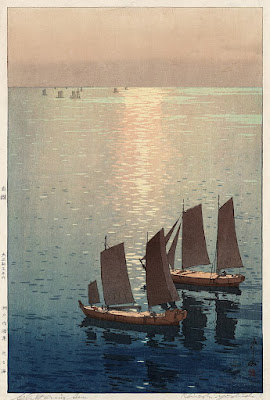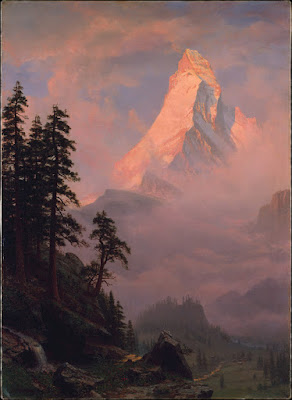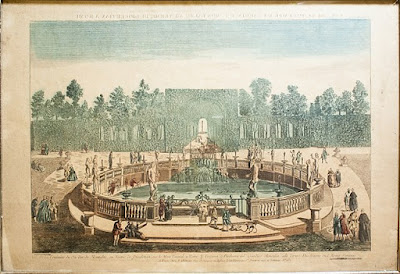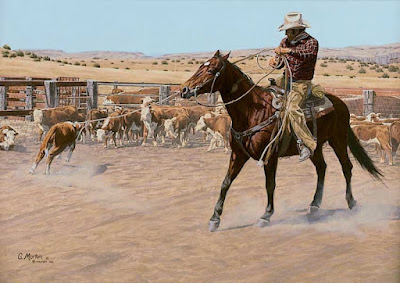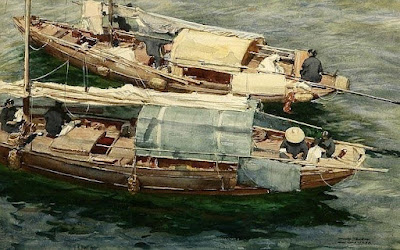Thursday, June 30, 2022
Checking Messages
Wednesday, June 29, 2022
The Day the Desert Lab Caught Fire
Tuesday, June 28, 2022
Monday, June 27, 2022
Baby Sketch and 35 Years Later
Sunday, June 26, 2022
Skimmers in Poseidos

I originally produced this small painting as a concept for a virtual-reality ride simulator. Note the riders seen through the windscreen of the main vehicle.
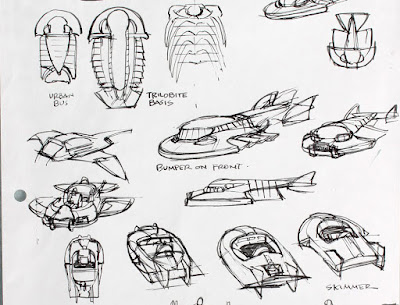
I included the artwork in the book First Flight, which is set in Poseidos, the high tech capital of ancient Dinotopia. In this spun-off sub-universe, people and dinosaurs challenge a dystopian society of drones, surveillance, and AI-powered robots, all of which have become increasingly relevant in the 23 years since the book came out.
--
(Link for signed copies)
Saturday, June 25, 2022
Dinotopia and Smithsonian
• A paleontologist from the National Museum of Natural History, Dr. Michael Brett-Surman, was an early scientific consultant on the project. He and other Smithsonian colleagues dressed up in Dinotopian costumes and came on stage to answer questions after a lecture I gave in Washington. They knew the answer to every question the kids had.

• In September 1995, Dinotopia was featured on the cover of the Smithsonian magazine, together with a behind-the-scenes article. (There are signed copies in my online store.)

• In 2002, the National Museum of Natural History hosted an exhibition of original art from the books.

Friday, June 24, 2022
How They Made Prehistoric Planet
Thursday, June 23, 2022
Watkins Glen Study
The stream at the head of Watkins Glen in New York flows over fine-grained Devonian layers of sedimentary rock.
Tuesday, June 21, 2022
Mountain Stream

Monday, June 20, 2022
Art of the Backdrop
CBS produced this lively overview of the art of Hollywood painted backdrops, or "backings," as they're known in the business. (Link to YouTube)
Sunday, June 19, 2022
The Magic of Red Priming
Full video on YouTube
Saturday, June 18, 2022
Painting Over Red Priming
Friday, June 17, 2022
Astronaut Sketch
This was a small, unused concept sketch for a science fiction paperback cover called "Steps of the Sun" by Walter Tevis, 1985.
Summary of the book's plot from Ebay: "In a world where America’s power is rapidly being overshadowed by China’s, only one man has the wealth, resources, and courage to seek the mineral resources his country needs to reclaim its greatness. Ben Belson, the richest man in the world, lacks for nothing his wealth can buy -- but he is haunted by the memory of a barren and loveless childhood. When he travels to the stars in search of the mineral wealth America needs, he finds more than he bargains for -- and gets more than he ever believed was possible."
Thursday, June 16, 2022
Shin-Hanga Movement
Wednesday, June 15, 2022
Sketchbooks and Their People
This video takes us into the Tate archive, offering a loving look at artists' sketchbooks.
Tuesday, June 14, 2022
Lomography

Monday, June 13, 2022
Boldini's Portrait of His Father
Sunday, June 12, 2022
Making the Matterhorn
Albert Bierstadt (1830-1902) increased the vertical dimension to add drama to his study of the Matterhorn.
Saturday, June 11, 2022
Enchanted Exhibition in Tennessee
Chief Curator Nandini Makrandi says: "The exhibition has gone extremely well, with larger than usual attendance for us. It’s been really fun to see everyone enjoying themselves in the galleries."

Cara McGowan, Director of Marketing & Communications, says the response has been "overwhelmingly positive. Visitation has been strong, with lots of first-time guests (or those who haven’t been to the museum in a while) coming to see the exhibition."
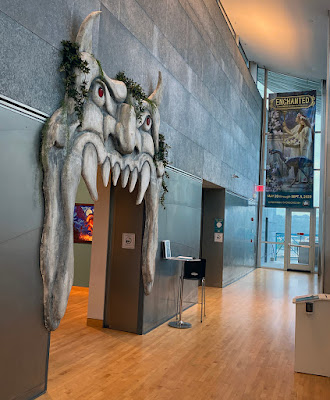
Adera Causey, Curator of Education, says the museum has developed lots of programs for adults and kids connected to the exhibition. She says: "our summer campers have been delighted by it and it has inspired lots of monster-, dragon-, sword-, and fairy-themed art works by our campers." She says that the show has brought in lots of new guests, but also has helped existing audiences see the museum in new ways, too.
Friday, June 10, 2022
Painting Tips for an Urban Scene
• Mustard-colored casein priming (done first in the studio) doesn't activate when rewet.
• In the drawing stage, I'm looking for key landmarks in the scene, which I use for measurements and alignments.
• The drawing is more a scaffolding or a foundation than it is a detailed underdrawing.
• By not making the drawing too elaborate, I'm more willing to paint over it, which is important in gouache.
• The sky is the keynote of every landscape, so I paint it first and paint my way to the foreground.
• With such an insistent priming color, I need to use opaques to cover it up.
• Limited gouache palette: white, cadmium yellow deep, burnt sienna, and ultramarine blue.
Watch the 5 minute video on YouTube, linked in bio.
Thursday, June 9, 2022
Architectural Maquette
I make the archway maquette to the same 1/72 scale as a set of tiny dinosaur maquettes by David Krentz.
The arch is made out of foam core board and mat board hot-glued together, with domes made of Styrofoam balls. I cover the structure with gesso and modeling paste and paint it in acrylic. The wall on the left is made from toy wooden blocks, which cast a shadow on the left of the scene.I set up the tableau outdoors on a plywood base. It's possible to rotate the whole arrangement until the sun is shining into the scene at an interesting angle. I want to know how the forms are affected by the reflected light bouncing up from the warm, sandy surface in the foreground.
Wednesday, June 8, 2022
Tuesday, June 7, 2022
Karel Zeman's Imaginary Worlds
Czech filmmaker and animator Karel Zeman used a variety of techniques: stop motion, puppetry, live action, and miniatures to create imaginative films.
According to the YouTube description, "This film takes a look behind the scenes of motion pictures made between 1947 and 1980 and shows how some of his special effects were achieved. Examples range from early shorts like "Inspiration", "King Lavra" and those featuring the popular character of Mr. Prokouk, to such features as "An invention for destruction", "Baron Munchausen" and "A jester's tale". In today's world of technology, Zeman's work has a home-made quality, but the designs have a beauty and elegance that has seldom been equaled."
Monday, June 6, 2022
Painting a Realistic Urban Sketch with Gouache
Here's a quick video where I paint some ordinary commercial shopfronts on an overcast day using gouache.
To achieve realism—and to speed things up—I use flat brushes and I paint patches of color that I subdivide with dark strokes. (Link to YouTube)
Sunday, June 5, 2022
Zograscope
A zograscope is an optical device with a large lens that enhances the impression of three-dimensional depth in a flat image.
"Some artists from the 17th-century Dutch Golden Age painting, like Pieter Janssens Elinga and Samuel Dirksz van Hoogstraten created a type of peep shows with an illusion of depth perception by manipulating the perspective of the view seen inside, usually the interior of a room. From around 1700 many of such "perspective boxes" or "optica" had a bi-convex lens with a large diameter and small dioptre for an exaggerated perspective, giving a stronger illusion of depth. Most pictures showed architectural and topographical subjects with linear perspectives."
Engraved views with enhanced perspective called vue d'optiques were created for this purpose.
Saturday, June 4, 2022
Friday, June 3, 2022
Gideon in Dinotopia
Thursday, June 2, 2022
A Good Explainer on AI Art
I'm honored that Vox media asked me to be part of this video about AI-generated artwork.
There's a hidden bonus video that explores the reactions of various artists.
• How do you feel this technology will affect the business and practice of art that you do?• Do you want to use these tools?• Will they change what you do or how you do it?
Wednesday, June 1, 2022
Donald Teague's Procedure
Illustrator Donald Teague (1897-1991) was known for his adventure illustrations. His process began with small pencil compositions.
According to Ernest Watson, "He may make up a score, fifty or even more of these before he takes up his brush for color studies—these also at small scale. 'There is nothing I can add to this,' Teague said."
"'The preliminary sketches are just blood and sweat.' After he has produced a satisfactory color comprehensive, he goes out on location to sketch from models which he poses as they are to appear in the composition. There may be a dozen horses, three or four figures, and a vehicle or two in the picture. All will be sketched in pencil and afterward."
After that the sketches are projected on a sheet of watercolor paper. The pencil lines are finalized without resorting to an eraser, which could introduce unwanted oils. He then produces the final illustration in watercolor or gouache.
Teague also traveled and sketched from observation with his watercolor set.
Quotes are from the book Forty Illustrators and How They Work
















